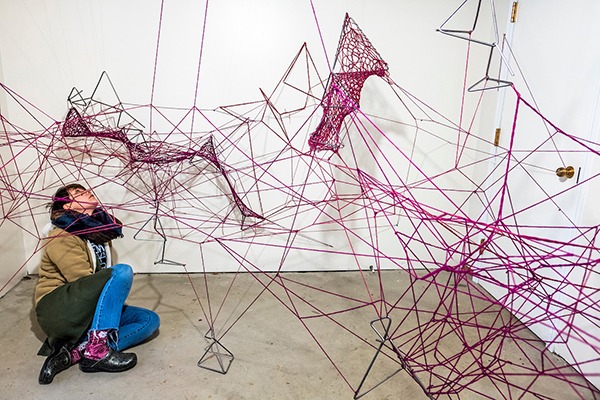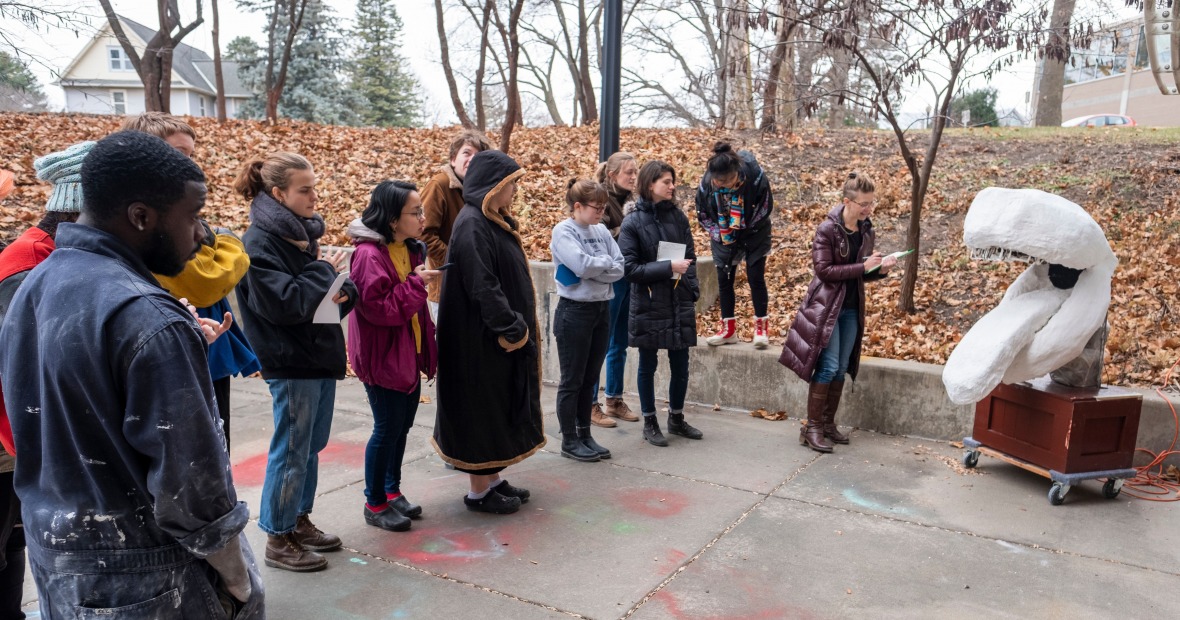Blending Art and Technology
Professor Lee Running’s sculpture class, ART 242, blends old tech with new, giving students the ability to think creatively and critically when constructing large metal and wood sculptural pieces.
“We're in a time of real serious discovery; when I was an undergrad, no one had a tiny computer in their pocket. Now these are some of our most important tools that we have with us all the time,” Running says. “I’m interested in students incorporating new technologies in a way that feels authentic to their work.”
The art department’s addition of equipment like a computerized numerical control (CNC) router — a machine able to cut various kinds of hard materials like wood, aluminum, and plexiglass — and an industrial-sized laser engraver has given students the opportunity to use new tech to create much larger and more intricate pieces than in the past. Students also learn the ins and outs of standard shop tools like jigsaws and welders and how to do things like hand-polish a surface.
Hands-on Tool Knowledge Helps Students Gain Confidence as They Pursue Their Artistic Ideas

“Students find it hugely liberating to learn to use tools,” Running says. “It’s really exciting for them to learn how to weld for the first time, to learn how to use an 8-foot CNC router, to use a giant table saw. I think they leave feeling like they can physically do anything and have likely developed the sort of patience and perseverance to work through a number of pretty rigorous material problems.”
Running says the class also helps students develop deeper problem-solving skills because they have to learn how to join vastly different materials to synthesize a new form. Gabby DeRoche ’19, a biological chemistry major, took the class in fall 2018.
“Aside from the technical skills of using carpentry and power tools and MIG welding, I learned that each material or medium is different and unique,” she says. “Not only are there diverse options, but different techniques utilizing the same material can produce drastically different results and effects. Initially, a material and/or process may hold no significant meaning; but once you start to deconstruct the very same materials and processes, so many nuances can be illuminated, providing meaning where there once was none.”
For their metal project, students were provided six 6-foot pieces of quarter-inch steel rod. Their mission was to build a metal armature that they would skin with another material. Not only did they have to learn to cut and form metal with welders, they also had to use the department’s laser engraver to engrave the skin of the material covering their metal armatures.
“I'm really excited by the power that students feel when they're able to work with their hands in that way,” Running says. “I don't think you can separate materials from the politics of how they're made and how they come about and what goes into these things. We talk a lot about what the work is for in the world, but also what it means to be a maker in contemporary life. In a time when a lot of our students buy a lot of their stuff on Amazon and it comes to them in the mail, it's really a radical action to make something with your hands.”

